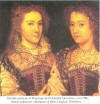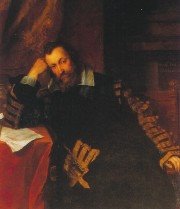
* * *
Chelsea Football Club have a blue lion -
is there a link to the Percy or Robert the Bruce
blue lion?
* * *
(quotes)
Chelsea F.C.
Their traditional crest is a ceremonial blue lion holding a staff;
(quotes)
Chelsea F.C.
Their traditional crest is a ceremonial blue lion holding a staff;
a modified version of this was adopted in 2005.[4]
* * *
In 1953, Chelsea's crest was changed to an upright blue lion looking backwards and holding a staff, which was to endure for the next three decades.
This crest was based on elements in the coat of arms of the Metropolitan Borough of Chelsea [26]
with the "lion rampant regardant" taken from the arms of then club president Viscount Chelsea
and the staff from the Abbots of Westminster, former Lords of the Manor of Chelsea. It also featured three red roses, to represent England, and two footballs. This was the first club badge to appear on shirts, since the policy of putting the crest on the shirts was only adopted in the early 1960s.[25]
In 1986, with new owners now at the club, Chelsea's crest was changed again as part of another attempt to modernise.[25] The new badge featured a more naturalistic non-heraldic lion, yellow and not blue. It lasted for the next 19 years, with some modifications such as the use of different colours.
With new ownership, and the club's centenary approaching, combined with demands from fans for the club's traditional badge to be restored, it was decided that the crest should be changed again in 2004. The new crest was officially adopted for the start of the 2005-06 season and marks
a return to the older design of the blue heraldic lion holding a staff.[4] As with previous crests, this one has appeared in various colours, including white and gold.
http://en.wikipedia.org/wiki/Chelsea_F.C.
* * *

1953 image not copyrighted to club
http://en.wikipedia.org/wiki/Image:Chelsea%27s_old_badge.jpg
* * *
"Why Hotspur .....?"
The real name of Harry Hotspur (best known from Shakespeare's "Henry IV") was Sir Henry Percy. Sir Harry, as he was better known, gained the nickname Hotspur because he fearlessly led his troops as they rode into battle.
He was the teenage son of the Earl of Northumberland. The Northumberland (or Percy) family was the most powerful in England. They came to own land in north London, including what was to become Northumberland Park.
Originally a cricket club organized by a church minister to keep local schoolboys occupied, one of their earliest HQs was the YMCA at the park's Percy House, with the Northumberland Arms pub being utilized for changing rooms as football became the group's main pursuit.
Their first treasurer L R Casey had an older brother who, well versed in Tottenham area history, suggested "Hotspur" as the name of the club. It was subsequently discovered that there was a London Hotspur also in existence, so Tottenham was added as a prefix.
By the way, Harry Hotspur died leading rebel forces against Henry IV at the Battle of Shrewsbury (1403).
-- Thanks to Steve Marson for the original background for this historical segment.
I see you stand like greyhounds in the slips,
Straining upon the start. The game's afoot:
Follow your spirit; and, upon this charge
Cry "God for Harry! England and Saint George!"
http://www.thequake.com/caats.html
* * *




































